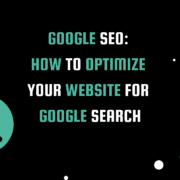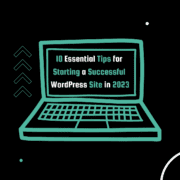How to Write a Blog Post in 2023: A Detailed Guide

In the digital age, the pen (or rather, the keyboard) is mightier than ever. Blogging has become a powerful tool for individuals and businesses alike, offering a platform to share knowledge, express creativity, and connect with like-minded individuals. But the art of crafting a well-written blog post is not as simple as it may seem. This guide aims to equip you with the necessary skills and insights to write a blog post that not only resonates with your audience but also stands out in the crowded blogosphere.
How to Write a Blog Post
Understanding Your Audience

Before you put pen to paper, or fingers to keyboard, it’s crucial to know who you’re writing for. Understanding your audience is the first step in creating content that resonates. It’s about knowing their needs, interests, and challenges, and how your blog can provide value.
Start by creating reader personas, detailed representations of your ideal readers. Consider their demographics, their goals, and their pain points. Use surveys, social media, and comments on your blog to gather this information. Remember, the more you know about your audience, the better you can tailor your content to their needs.
Choosing a Topic
Once you know your audience, the next step is to choose a topic that will interest them. This is where keyword research comes into play. Keywords are the terms that people type into search engines. By targeting these keywords in your content, you can attract the right readers to your blog.
Use keyword research tools like Google Keyword Planner or SEMrush to find popular search terms related to your niche. Look for keywords with high search volume but low competition, as these represent topics that people are interested in but aren’t overly saturated with content.
Creating a Catchy Title
Your title is the first thing readers see, and it can make or break whether someone clicks on your blog post. A compelling title should be intriguing, convey the value of the post, and include your target keyword for SEO purposes.
Consider using numbers (e.g., “5 Tips for…”), how-to statements (e.g., “How to Write…”), or questions (e.g., “What is the Best Way to…”) to make your title more enticing. Remember, your title is a promise to your readers, so make sure your content delivers on that promise.
Crafting an Engaging Introduction
The introduction is your chance to hook your readers and convince them to stay. Start with a powerful statement, a surprising fact, or a compelling question to grab their attention. Then, briefly outline what the post will cover and how the reader will benefit from it.
Remember, your introduction should be a teaser for the rest of the post. It should entice the reader to continue, but without giving too much away.
Structuring Your Blog Post
A well-structured blog post is easier to read and understand. Break your content into sections with clear headings and subheadings. Use bullet points or numbered lists to present information concisely.
Remember to keep paragraphs short and sweet. Large blocks of text can be intimidating and hard to read. Aim for two to three sentences per paragraph to keep your content digestible.
Writing the Main Body
The body of your blog post is where you deliver on the promise of your title and introduction. Present your ideas clearly and engagingly, using a conversational tone and storytelling to keep your readers engaged.
Remember, your blog post is not a monologue, but a conversation with your readers. Encourage them to think, reflect, and engage with your content. Use personal anecdotes and real-life examples to make your content relatable and authentic.
Using Visuals

Visuals are a powerful tool to enhance your blog post. They can break up the text, illustrate points, and make your content more engaging. Use images, infographics, or videos to support your points and provide a visual break for your readers.
When using visuals, ensure they are high-quality and relevant to your content. Remember to include alt text for images for SEO purposes and to improve accessibility.
Incorporating SEO Best Practices
SEO, or Search Engine Optimization, is crucial for increasing your blog’s visibility. Incorporate your target keyword naturally throughout your post, in your title, headings, and meta description. But avoid keyword stuffing, as this can harm your SEO and make your content feel forced.
Remember to use internal and external links in your post. Internal links keep readers on your site and help search engines understand your content, while external links to high-quality sites can boost your credibility.
Writing a Strong Conclusion
Your conclusion is your chance to summarize your points and leave a lasting impression. Restate the main points of your post and how they benefit the reader. End with a call-to-action, inviting readers to comment, share your post, or take some other action.
Remember, your conclusion should wrap up your post neatly, leaving your readers feeling satisfied and ready to engage with your content.
Proofreading and Editing
Even the best writers make mistakes. Proofreading and editing are crucial steps in the writing process to ensure your post is clear, concise, and free of errors. Use tools like Grammarly or Hemingway Editor to help catch any mistakes and improve readability.
Remember, editing is not just about fixing errors. It’s also about refining your message, improving clarity, and ensuring your post provides the best possible value to your readers.
Promoting Your Blog Post
Writing a great blog post is only half the battle. You also need to promote your post to reach a wider audience. Share your post on social media, send it to your email list, or use SEO to attract organic traffic.
Remember, promotion is not a one-time thing. Continue to share and promote your post long after it’s published to keep attracting new readers.
And that, my friends, is how to write a blog post.
Conclusion
Writing an amazing blog post is a craft that requires understanding your audience, choosing the right topic, creating compelling titles and introductions, structuring your post effectively, writing engaging content, using visuals, incorporating SEO best practices, writing strong conclusions, proofreading and editing, and promoting your post effectively.
With this guide on how to write a blog post, you’re now equipped with the knowledge and skills to deliver an article that resonates with your audience and stands out in the crowded blogosphere. So go ahead, start writing, and let your voice be heard.
Your Turn
Did you find this guide helpful? Do you have any tips or experiences to share about writing a blog post? I’d love to hear from you. Leave a comment below, share this post with your network, or subscribe to the blog for more helpful guides like this. Happy blogging!
Tony has a bachelor’s degree from the University of Phoenix and over 11 years of writing experience between multiple publications in the tech, photography, lifestyle, and deal industries.











Leave a Reply
Want to join the discussion?Feel free to contribute!